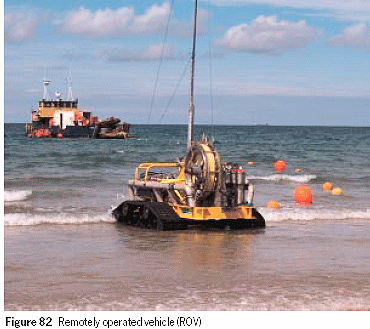Buy the Book
Published By Lankelma
Lankelma is the foremost contractor for onshore in-situ soil testing in the UK. An acknowledged
specialist in CPT, Lankelma also offers a worldwide consultancy and training service.
A.P. van den Berg develops, designs and manufactures geotechnical and environmental soil
investigation equipment for onshore and offshore applications. Specialists in CPT systems and equipment.
Gardline
Gardline Geosciences offers worldwide marine geotechnics, in-house consutancy and services with marine
investigations ranging from nearshore to full ocean depth (down to 3000m).
About the Author
Hans Brouwer studied civil engineering at Delft University in The Netherlands. He has
worked as a part-time lecturer at Amsterdam Polytechnic and was senior partner in a structural
engineering consultancy. He has written a standard textbook in Dutch about the design of
building foundations. He now lives in England where he writes technical textbooks in
English, hopefully to reach a bigger readership.
Quick Links:
Chapter 9
Near-shore marine testing
Remotely operated vehicles (ROVs)
| |
REMOTELY OPERATED VEHICLES (ROVS) 9.3
The successful completion of ground investigations within the marine
environment, especially in the near-shore zone, is difficult both in terms
of the quality of data that must be obtained and the management of the
environment (ie waves, currents, depth of water and wind etc). Good
management, the correct equipment and suitably trained personnel are
all necessary so that the required information can be collected with as
little downtime as possible. Typically, in exposed marine environments,
downtime of conventional geotechnical plant and equipment (drilling
platforms, barges and survey vessels) caused by weather conditions
and sea state can be highly variable, even under the management of
experienced marine contractors. Therefore, durable and versatile
equipment together with high quality recording equipment, and suitably
trained and experienced operators, are required in order to minimise
demurrage yet provide the requisite data needed for design.
Compact track-driven ROV systems have enhanced versatility in that
they can be used as the mounting platforms for subsea and intertidal
CPT operations (Figure 82).
The systems are available as 4.540 tonne units (in air) and can be
used to incorporate both light and heavyweight seabed frames (eg
Neptune and ROSON* systems).

The systems can be deployed from a variety of support platforms
(eg landing craft, multicat, jack-up or barge) or may be operated from
the land.
ROVs generally comprised a ROV frame, power plant and tracks with a
full complement of underwater cameras. It is operated and controlled
via an armoured electro-hydraulic umbilical cable from the central
control cabin on the deck of the survey boat. CPTs are performed via
2 attached seabed frames and operate 2, 5 and 10 cm cone
penetrometers with a depth capability of up to 20 m below seabed
level. The systems are proven to operate successfully in 22.5 m
waves and swells.
Figure 83 shows the plots of a CPT made from a ROV and a Neptune
CPT unit with coiled rods. On the left, the plot shows the cone
resistance and the sleeve friction, and in the middle is the friction ratio;
these enable estimation of the seabed soil type on the right which is
very loose sand becoming medium dense sand.
A ROSON is a wheel-driven CPT unit which is described and illustrated in
section 9.4.
|
<< Previous PageNext Page >>